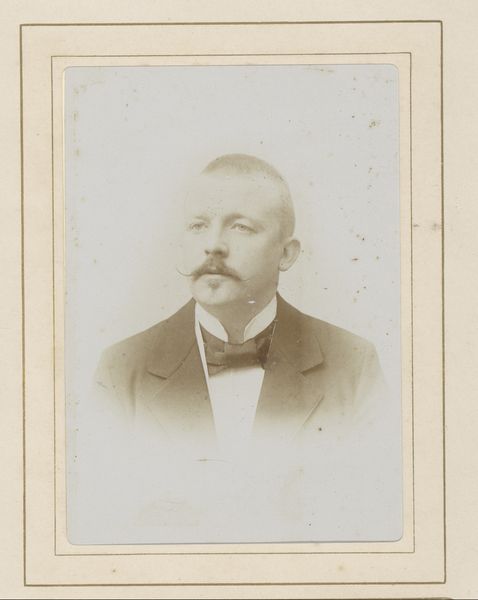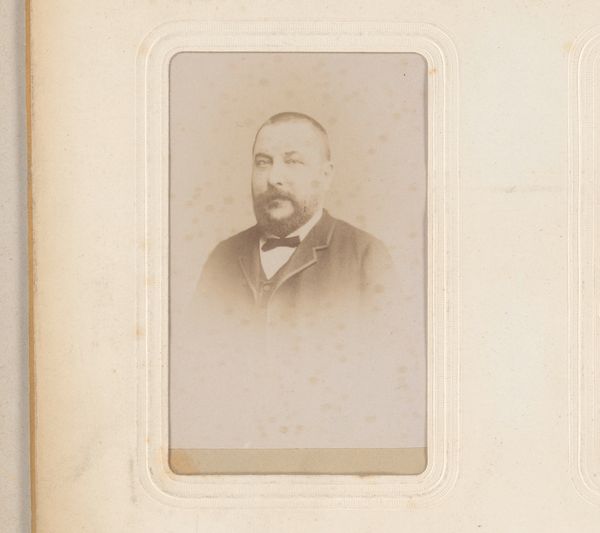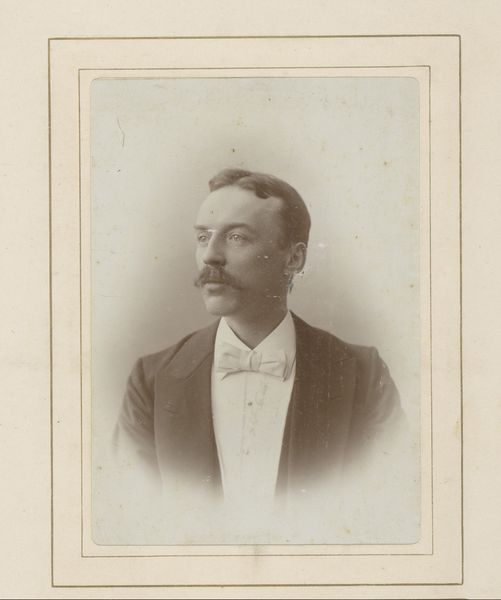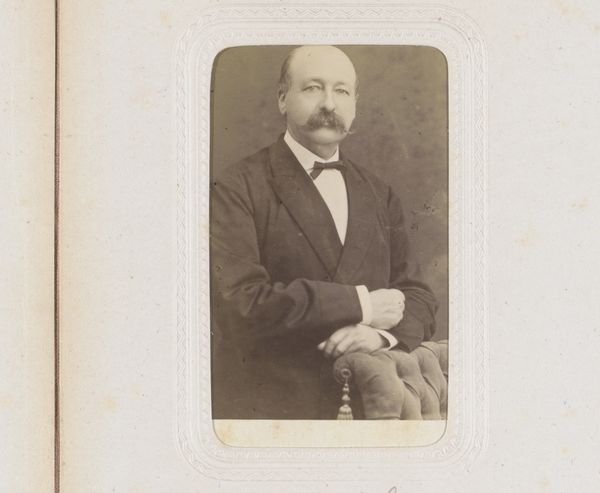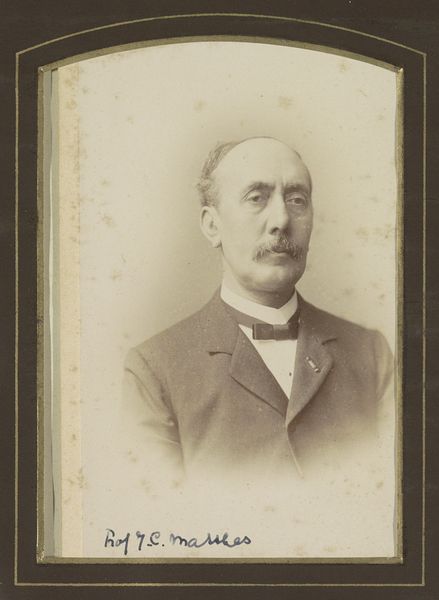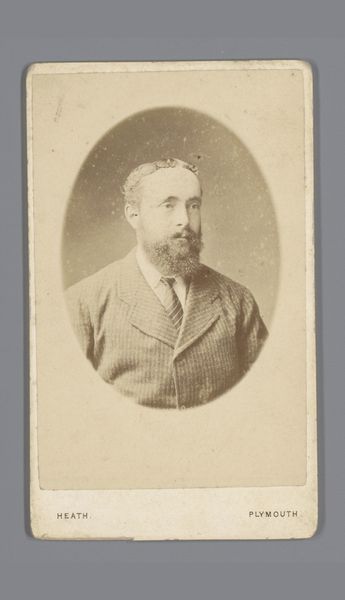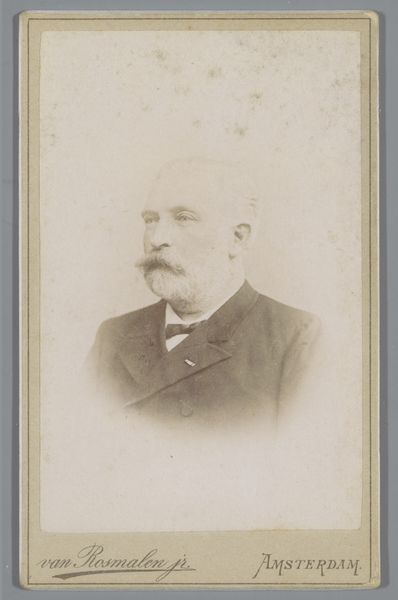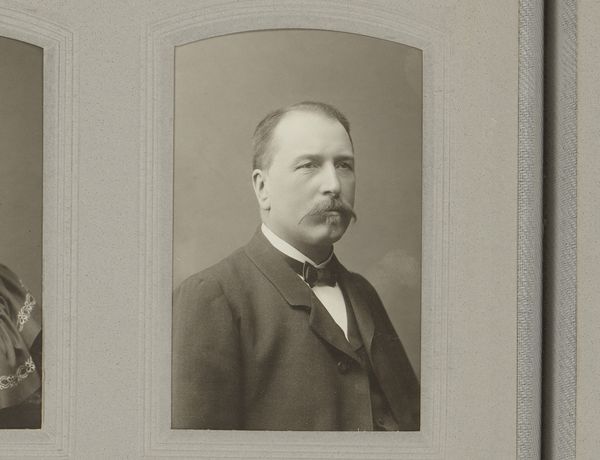
print, daguerreotype, photography, gelatin-silver-print
#
portrait
# print
#
daguerreotype
#
photography
#
gelatin-silver-print
Dimensions: height 103 mm, width 63 mm
Copyright: Rijks Museum: Open Domain
Editor: This is a photograph titled "Portret van Lucas Jonker," made sometime between 1875 and 1917 by Wegner & Mottu. It’s a gelatin-silver print, I believe. The sepia tone and the formal pose give it a very serious, almost austere feel. What do you see in this piece, particularly regarding its historical context? Curator: Well, immediately I see a potent visual document, complicit in and reflective of the visual language of power. We see Jonker presented with the trappings of bourgeois masculinity: dark suit, neat tie, carefully groomed facial hair. The photograph itself, though seemingly straightforward, performed a social function. Consider its production during a time when photographic portraiture became increasingly accessible. How did this shift impact notions of self-representation and social mobility? Who had access to this medium, and what power dynamics were at play? Editor: So, it's not just a picture of a man, but a reflection of societal structures? Curator: Precisely. Think about who *isn't* in these photographs. The working class, people of color… their stories are often visually absent from this historical record. And even when they *are* present, it is often through the lens of the dominant culture. What do you think the act of commissioning such a portrait signified for Jonker and his contemporaries? Editor: Maybe it was about solidifying their place in society? Showing they had the means and the status? Curator: Exactly. It's a performance of identity, captured and disseminated through the burgeoning technology of photography. The studio, Wegner & Mottu in Amsterdam, also speaks volumes. What kind of clientele did they serve? Their location alone points towards certain class associations. Editor: That makes me see the photo in a whole new light, thinking about it as part of a bigger social picture rather than just as an individual likeness. Thanks! Curator: And thank you for prompting a much-needed reminder to look beneath the surface of seemingly straightforward historical artifacts.
Comments
No comments
Be the first to comment and join the conversation on the ultimate creative platform.

